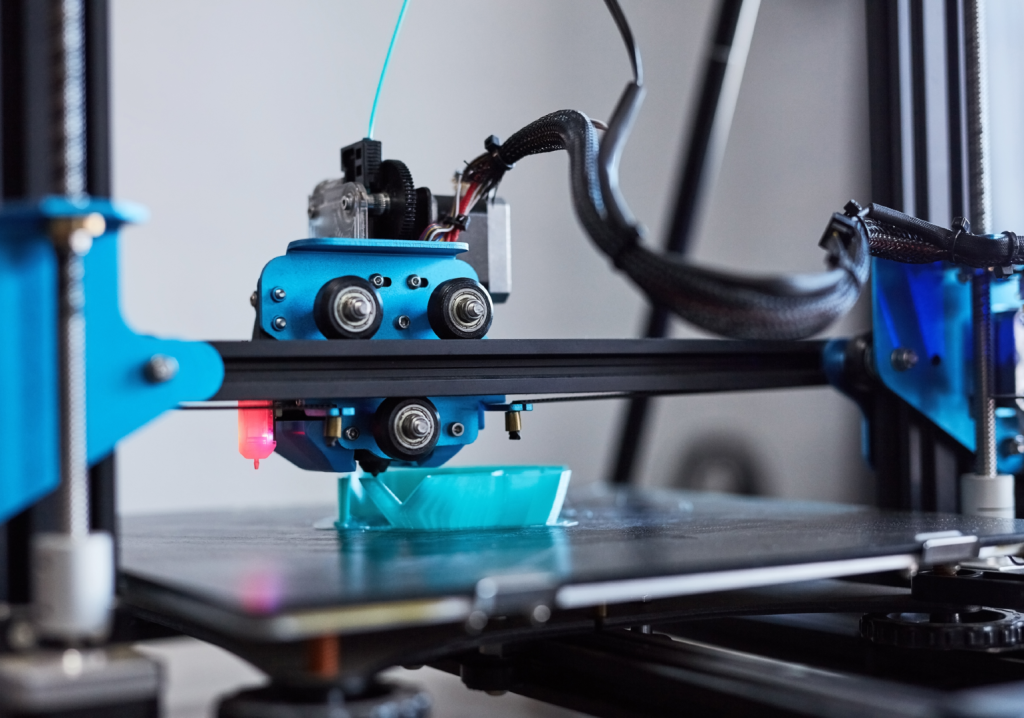The ability to directly produce components and products via 3D printing is revolutionising regional manufacturing.
In 2020, EDMS Australia made a strategic decision to enter into the world of additive manufacturing (AM), also known as 3D printing.
Christopher Pitcher MIEAust, mechanical engineer and Advanced Manufacturing Division Co-Lead at EDMS, and Engineers Australia’s Cairns Regional Committee Chair, said that it was “a way to foster innovation internally and position ourselves at the forefront of advancements in the defence supply industry”.
As a privately-owned far north Queensland firm with in-house engineering and advanced manufacturing located in Cairns, and a fabrication and construction division located in Townsville, EDMS received assistance from the Cairns Manufacturing Hubs Grant Program to purchase AM technology.
This included a commercial-grade handheld scanner, a high-end desktop 3D printer, and a commercial-grade 3D printer suitable for producing parts from nylon, fibreglass, carbon fibre and kevlar composites.
“The introduction of AM has significantly enhanced our operational efficiency in two key dimensions,” Pitcher said. “Firstly, through rapid prototyping, these systems have revolutionised our product development cycle.
“The ability to quickly iterate and test ideas has not only accelerated our innovation process but has also empowered us to refine and perfect designs with unprecedented speed for ourselves and our clients.”
These new capabilities have also changed the way EDMS approaches end-use product manufacturing.
“The capacity to directly produce components and products using additive methods has streamlined our production processes, reducing lead times and costs while maintaining a high level of precision and quality,” Pitcher said.
“This has not only translated into tangible operational efficiencies but has also positioned us as a leader in adopting cutting-edge manufacturing technologies.”
Technology in action
The company’s additive manufacturing capability is backed by its local professional engineering team, which has helped develop and manufacture engineered parts for industry from composites including onyx, onyx reinforced with long strand carbon fibre, kevlar and fire-resistant fibreglass.
Specialising in manufacturing for complex industries such as defence and maritime, Pitcher and his colleagues are using 3D printing to help design, model, engineer and manufacture prototypes, jigs, fixtures and low-volume end use parts quicker than ever.
“If you need a bespoke, custom component designed and manufactured quickly and economically, or you just can’t get that part anymore because it’s obsolete, we can help,” he said.
Additionally, EDMS can 3D scan a component or pieces of a component, join the pieces together through its modelling software and use additive manufacturing to build a replacement.
Emphasis on the local
Investing in technology enables the firm to offer services not currently available in the region, which allows it to leverage the opportunity to provide niche services at a commercial scale and industrial level.
Pitcher said to that end, when it comes to regional development – particularly in places such as far North Queensland – the significance of keeping manufacturing local cannot be overstated.
“Logistical complexities emerge as a substantial challenge,” he explained. “The vast distances and unique logistical demands in regional areas introduce complexities in the supply chain, transportation and distribution processes.”
Moreover, the need for skilled labour in regional areas adds another layer of complexity.
“Attracting and retaining skilled professionals becomes crucial, emphasising the importance of investing in local talent development and fostering collaboration between manufacturers and educational institutions,” he said.
“Addressing the skills gap by embracing technological advancements is integral to building a resilient and capable workforce in regional manufacturing centres like Cairns, to not only keep them self-sustaining but to also open them up to global markets.”
Expanding the benefits
This 3D scanning and printing capability offers a quick and cost-effective means of producing items much faster and at a significantly lower cost than traditional machining, casting and extrusion processes. These benefits can quickly translate to the wider regional economy.
“Our clients throughout North Queensland, particularly in the past few years, have relied heavily on product development and supply from overseas suppliers, which in some cases could take weeks if not months from idea through to prototyping,” Pitcher said.
“In contrast, our AM systems now empower clients to have a prototype ready within a weekend. This remarkable turnaround not only accelerates the innovation process but also positions regional manufacturing as a responsive and competitive force in the market.
“The swift transition from ideas to prototypes enhances efficiency, supports informed decision-making, and underscores the region’s capability as an agile and valuable manufacturing partner.”
Innovation is key to a brighter, climate-smart engineering future. Experience new ways to change the world at a World Engineering Day networking event in a city near you.
